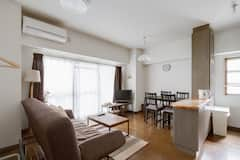Osaka is known for okonomiyaki, the Dōtonbori, and its famous standing bars, but there are many historical gems that make this city what it is today. Found in southwest Japan, it often comes third to Tokyo and Kyoto on many travellers’ lists, but Osaka has a very interesting past. Osaka served as a merchant city and is home to the initial development of mass economic growth in Japan, being dubbed the “nation’s kitchen” as a hub for the country’s rice trade back in the day. After the Second World War, Osaka had to rebuild in a dramatic way; as of present day, Osaka has established itself as one of the top places in Japan to visit — not only for its urban charms, but for its traditional Japanese experiences as well.
Japan is dotted with historical icons, with 20 UNESCO World Heritage Sites to choose from. Three of the historic landmarks within Osaka include the castle that has remained an important element of Osaka’s history since its construction over 400 years ago, one of the oldest shinto shrines found in Japan, and the origins of the Bunraku theatre. Each of these sites are important not only for locals, but for tourists eager to absorb the wonders of Japanese culture.
Samurais and tales in Osaka Castle

First on the list is Osaka Castle — a stronghold filled with over 400 years of tales. Osaka Castle was initially constructed by Toyotomi Hideyoshi in 1583, one of the most renowned politicians of the Sengoku Period, before being demolished in 1868 and subsequently being reconstructed over the course of the next 130 years. As of today, the main castle serves as a museum, with a 600 JPY (5.28 USD) entrance fee, and the gardens are open to the public daily.
You can find the castle on your left as you exit the Osakajokoen station on the subway, which is also accessible for JR Pass holders, and is a 1.5 km walk (1 mile) from the station. From there you’ll be able to follow the clearly indicated signs to head towards the gardens, encompassing 15 acres (approximately 6 hectares). Osaka Castle also has access for the disabled at every entrance, including lift access within the museum.
The museum is definitely worth the entrance fee if you’re keen to learn all about the history of Toyotomi Hideyoshi and the Toyotomi Clan, but also to discover more about the construction of Osaka Castle and its importance to local Osakans. With eight floors to explore, there’s plenty of information to take in — each floor acts as a moment in time throughout Toyotomi Hideyoshi’s rule and the progress of the construction of the castle. Finally, you’ll reach the top floor where you will enjoy a panoramic view of the beautiful city.
For picturesque views and a history lesson that arguably changed the face of Japan, visit Osaka Castle for a morning or afternoon excursion before heading over to religious sites.
Find peace in one of Japan's most ancient shrines

Sumiyoshi Taisha is a Shinto shrine easily accessible from a number of subway stations — either from Sumiyoshi Higashi, Sumiyoshi, Sumiyoshitaisha, and Hosoigawa stations. The nearest station for JR Pass holders to reach for free is Nagai station, which can be a fair walk — about 2.4 km (1.4 miles) away.
Once you reach the Sumiyoshi Taisha, you have the chance to explore the grounds in all its glory. This shrine was constructed before the dawn of Buddhism, with a unique flair of architecture that have stood the test of time, including its distinctive flat roofs, walkways and bridges. One of the highlights is the well-known Sorihashi Bridge (or Taiko Bridge), laden with reds, blacks and charcoal colours and its famous vermillion structures. If you’re lucky to be around the city during the religiously important periods of the year, notably Hatsumode (the first Shinto shrine visit performed by visitors after Japanese New Year), the shrine is filled with life of all ages. Despite its fame, the Sumiyoshi Taisha is one of the quieter shrines that can often serve as a place of tranquility.
In Osaka, this shrine is one of the biggest and most famous of landmarks in Japan and is a must-see for those eager to learn the traditional sides to life and history in Japan. Admission is free, thus this is perfect for those that aren’t planning to spend a long time in Osaka but are also after a cheap yet wonderful tour of this beautiful architectural gem.
Embrace the art of theatre at the birthplace of Bunraku

If you’re after an experience of Japan’s art history, then a visit to the National Bunraku Theatre is for you. The nearest station from the Theatre is Nippombashi, with the nearest JR Line station being Tsuruhashi Station with an added 2 km (1.2 miles) walk. There is also disabled access throughout the theatre.
Osaka is the origin of Bunraku founded in 1684. This form of traditional puppet theatre was identified as an activity shared between Japanese people for hundreds of years, with this theatre standing as a testament to the legacy of Bunraku. Bunraku shows typically last for several hours, so you have the option to watch a selected section of the performance at a certain time, normally stated on their website or at the reception in the theatre itself. These shows are completely in Japanese, but you’re welcome to rent an audio guide that will translate for the performance. Tickets cost between 2,000 and 6,000 JPY (17.35 to 52.00 USD), depending on where you prefer to sit, and translation audio guides cost 1,000 JPY (just under 9.00 USD).
For those after something different, yet are curious to learn more about Japan’s contribution to the world of arts and culture, look no further than a trip to the National Bunraku Theatre. As a suggestion, you can wrap up your day of historical activities by visiting the theatre in the evening by learning about this form of entertainment that is still a part of many people’s lives in Japan today.
You might be interested in these Airbnbs!
Learn all about the historical wonders of Japan in one city
Away from robot cafes, arcades, bustling streets and enough shopping districts to fill your suitcase with unique things twice over, Osaka’s charm often comes from its more traditional experiences. Whether you’re looking for a story about Japan’s growing politics in the 16th century, a trip to one of Japan’s most renowned religious sites, or if you want a story to be told through a puppet theatre, Osaka has a myriad of different experiences and museums you can explore with easy access to all. What’s more is that you can combine all of these activities into one day out to truly have a wonderful time discovering the other side to Japan’s tourist attractions.
History
Get Trip101 in your inbox
Unsubscribe in one click. See our Privacy Policy for more information on how we use your data





















Create an account to